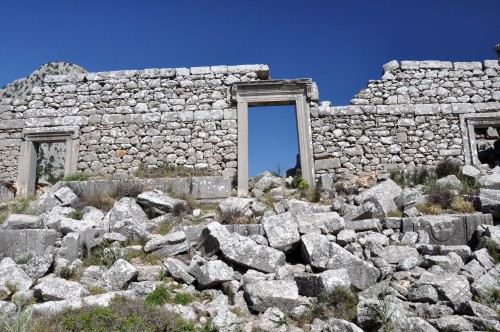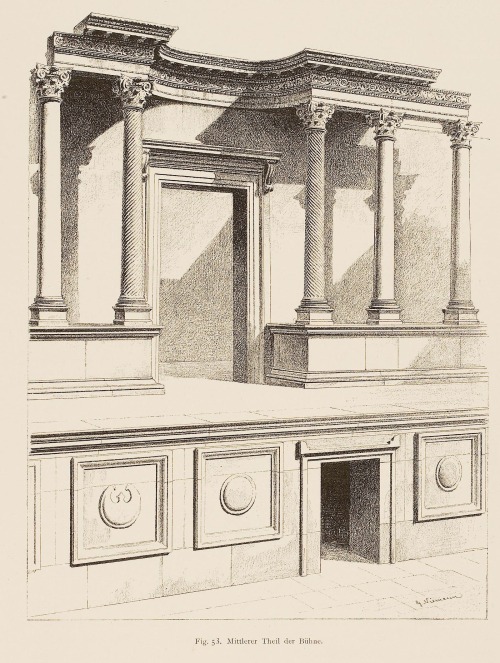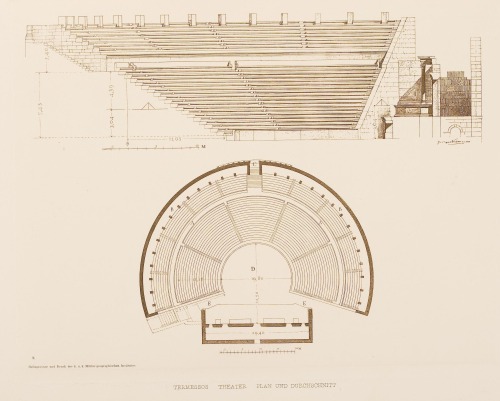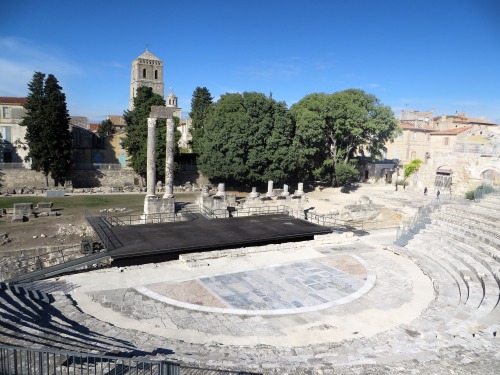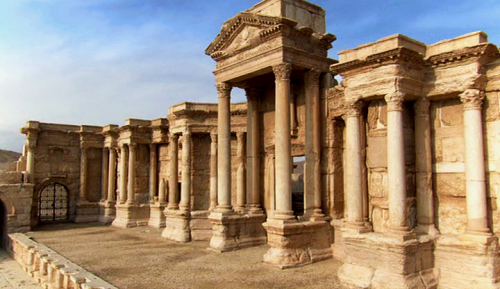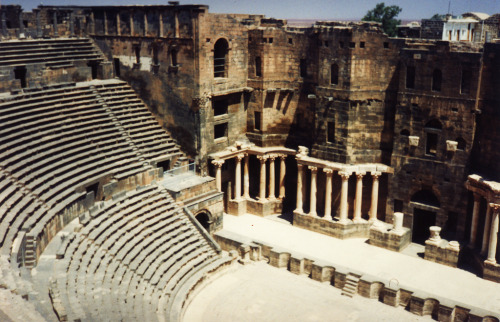#roman theatre
Theatre of Termessos
Termessos, Pisidia, Asia Minor (Turkey)
2nd century CE
4000 - 5000 spectators
Immediately to the east of the agora lies the theatre. Commanding a view out over the Pamphylian plain, this building is no doubt the most eyecatching in all the Termessos plain. It displays most clearly the features of the Roman theatre, which preserved the Hellenistic period theatre plan. The Hellenistic cavea, or semicircular seating area, is divided in two by a diazoma. Above the diazoma rise eight tiers of seats, below it are sixteen, allowing for a seating capacity of some 4-5,000 spectators. A large arched entrance way connects the cavea with the agora. The southern parados was vaulted in Roman times, the northern has been left in its original open-air state. The stage building exhibits features characteristic of the 2nd century CE. A long narrow room is all that lies behind it. This is connected with the podium where the play took place, by five doors piercing the richly ornamented facade or scaenae frons. Under the stage lie five small rooms where wild animals were kept before being taken into the orchestra for combat.
Post link
Ancient Worlds - BBC Two
Episode 6 “City of Man, City of God”
Palmyra2010
Part II
Palmyra, Syria
Post link





